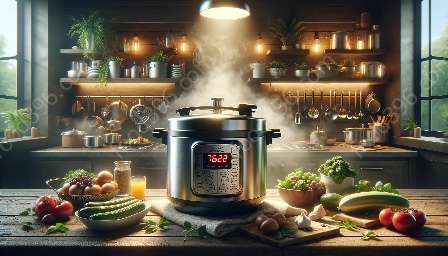Sous vide cooking is a culinary technique that has gained popularity in recent years for its ability to produce mouthwatering dishes with precise results. This method involves sealing food in airtight bags and cooking it in a water bath at a precisely controlled temperature, ensuring even cooking and maximum flavor retention.
Benefits of Sous Vide Cooking
One of the key advantages of sous vide cooking is the ability to achieve consistent results with minimal effort. By cooking food at a precisely controlled temperature, you can avoid overcooking and achieve perfect doneness every time. Additionally, sous vide cooking preserves the natural flavors and juices of the ingredients, resulting in exceptionally tender and flavorful dishes.
Another benefit of sous vide cooking is the convenience it offers. Once the food is sealed in the bag and placed in the water bath, there is minimal hands-on time required, allowing you to focus on other elements of your meal or simply relax while the food cooks to perfection.
Sous Vide and Pressure Cooking
While sous vide cooking and pressure cooking are distinct methods, they share some commonalities, particularly in their ability to produce tender and flavorful dishes in a relatively short amount of time. Pressure cooking utilizes steam and high pressure to cook food quickly, while sous vide cooking relies on precise temperature control to achieve consistent and uniform results.
Both methods offer convenience and the ability to retain the natural flavors of the ingredients, making them valuable tools in the kitchen for busy individuals or home cooks looking to elevate their culinary skills.
Equipment for Sous Vide Cooking
To engage in sous vide cooking, you'll need a few key pieces of equipment, including a sous vide precision cooker or immersion circulator, vacuum-sealer bags or resealable bags, and a container for the water bath. The precision cooker or immersion circulator is essential for maintaining the precise temperature needed for sous vide cooking, while the vacuum-sealer or resealable bags ensure a tight seal to prevent water from entering the food during the cooking process.
Food Safety and Sous Vide Cooking
When cooking with the sous vide method, it's important to prioritize food safety. Since sous vide cooking involves cooking food at lower temperatures for an extended period, there is a risk of bacterial growth if proper precautions are not taken.
To ensure food safety when cooking sous vide, it's crucial to follow recommended cooking temperatures and times for different types of food. Additionally, it's important to rapidly cool and properly store the cooked food to prevent the growth of harmful bacteria.
Exploring Food Preparation Techniques
As part of a comprehensive approach to culinary skills, it's beneficial to explore a variety of food preparation techniques, including sous vide cooking and pressure cooking. Each method offers unique benefits and can be applied to different types of ingredients and dishes.
By expanding your knowledge of food preparation techniques, you can enhance your cooking abilities and create a diverse range of flavorful and well-executed meals.
Conclusion
Sous vide cooking is a versatile and rewarding culinary technique that can elevate the quality of your home-cooked meals. With its ability to deliver consistently tender and flavorful results, sous vide cooking complements other food preparation techniques, such as pressure cooking, and offers a valuable addition to any home kitchen.
By understanding the principles and benefits of sous vide cooking, exploring compatible methods like pressure cooking, and developing proficiency in a range of food preparation techniques, you can enhance your confidence and creativity in the kitchen, ultimately leading to more satisfying and impressive culinary creations.

